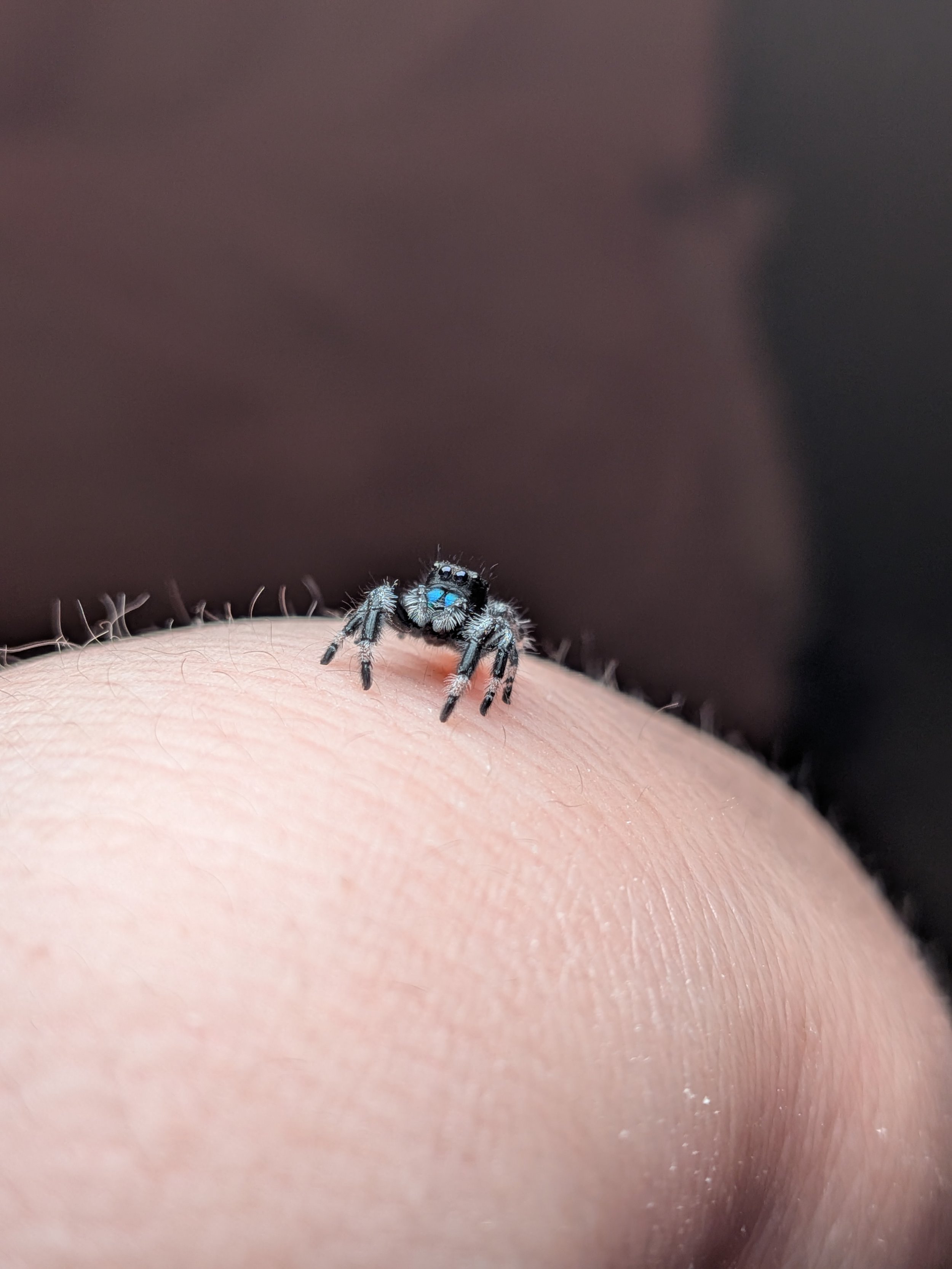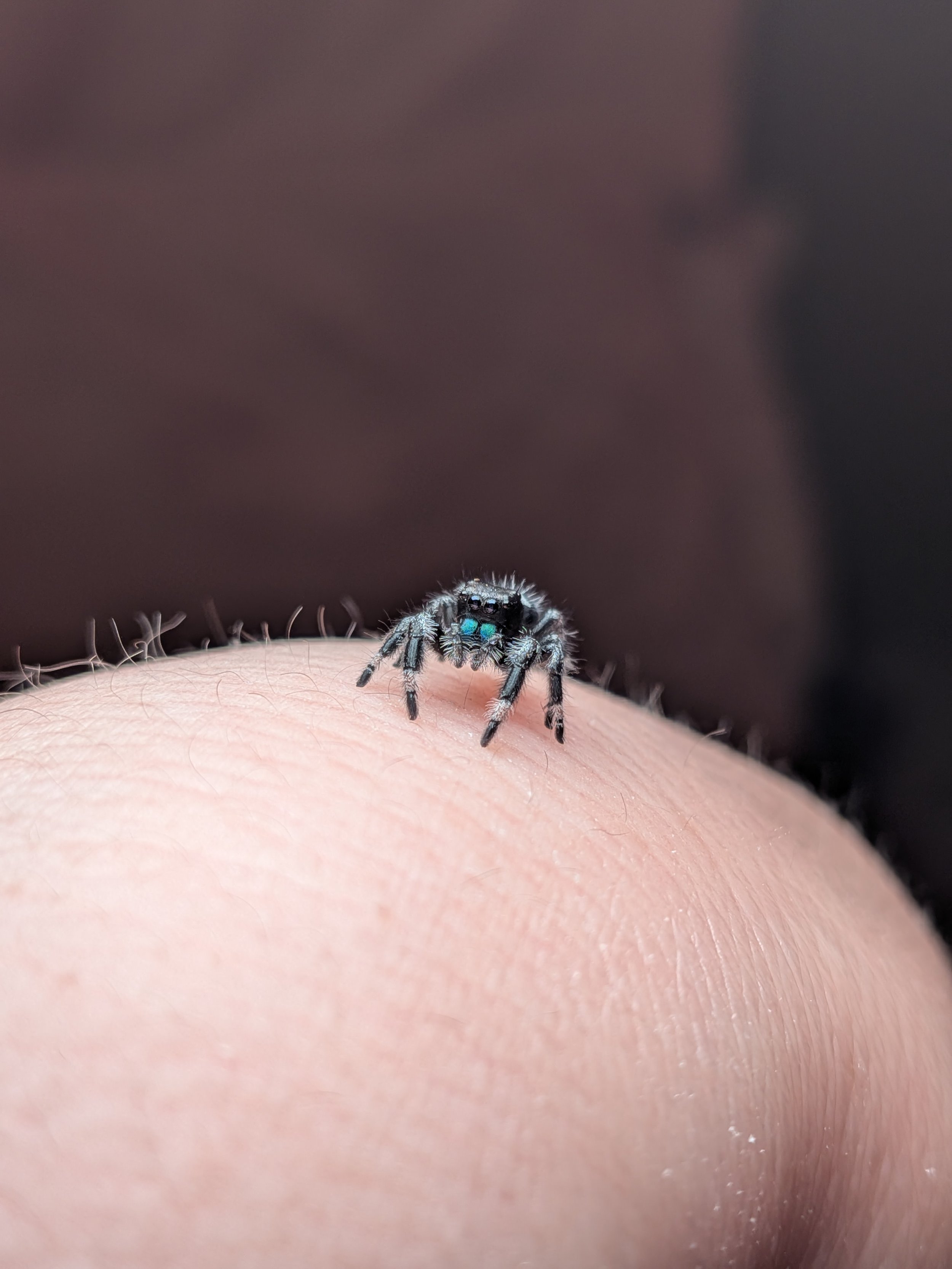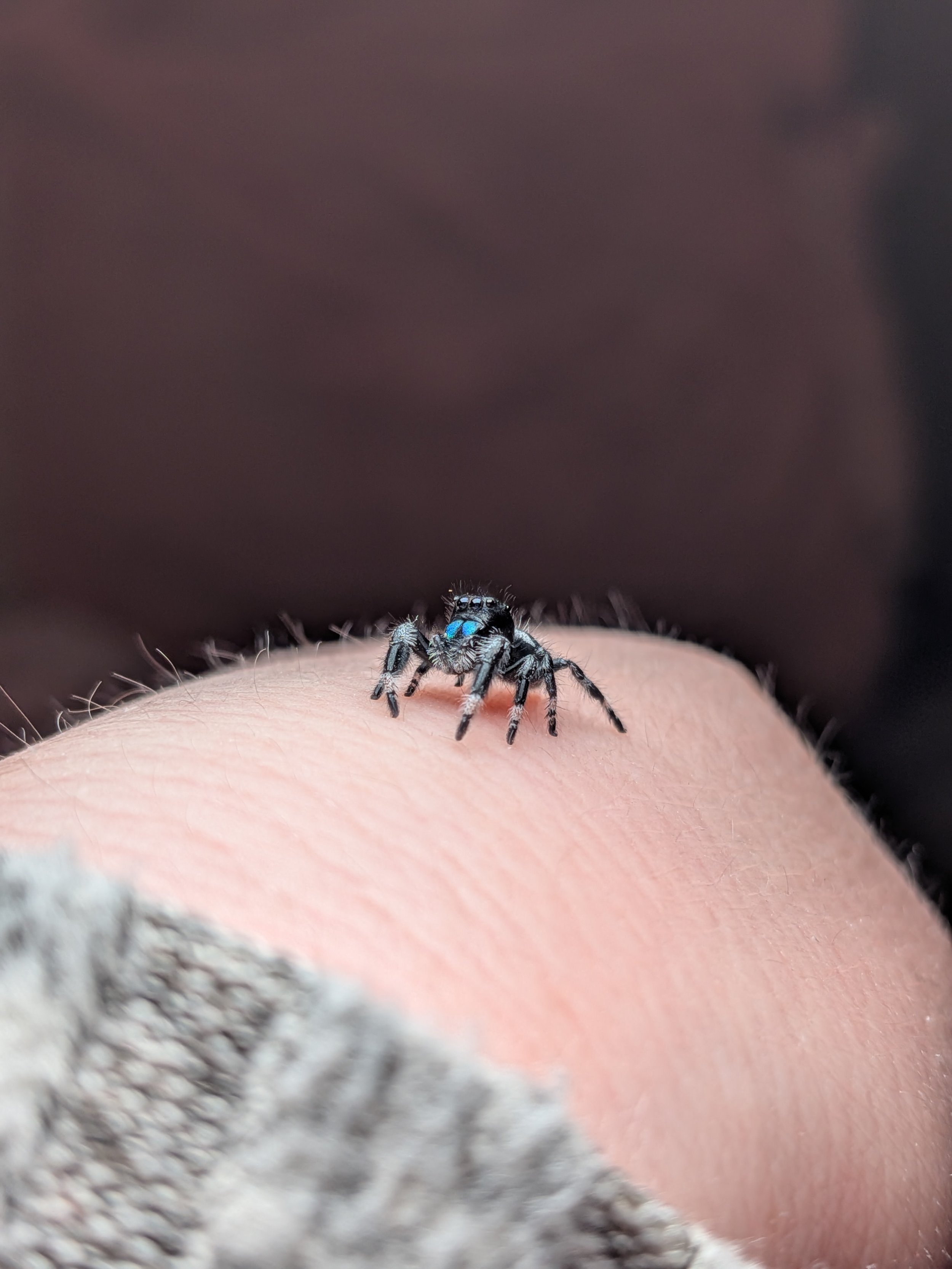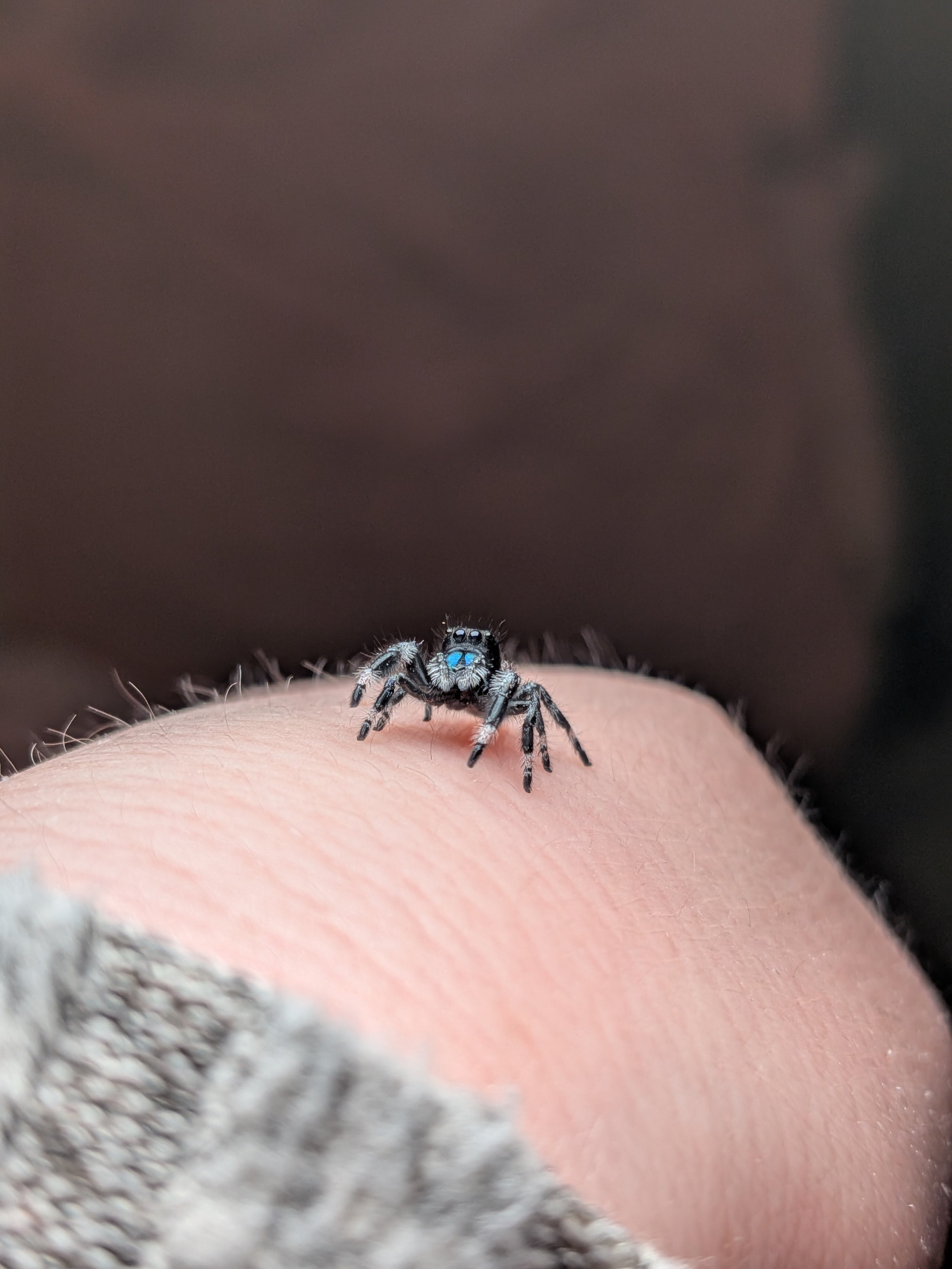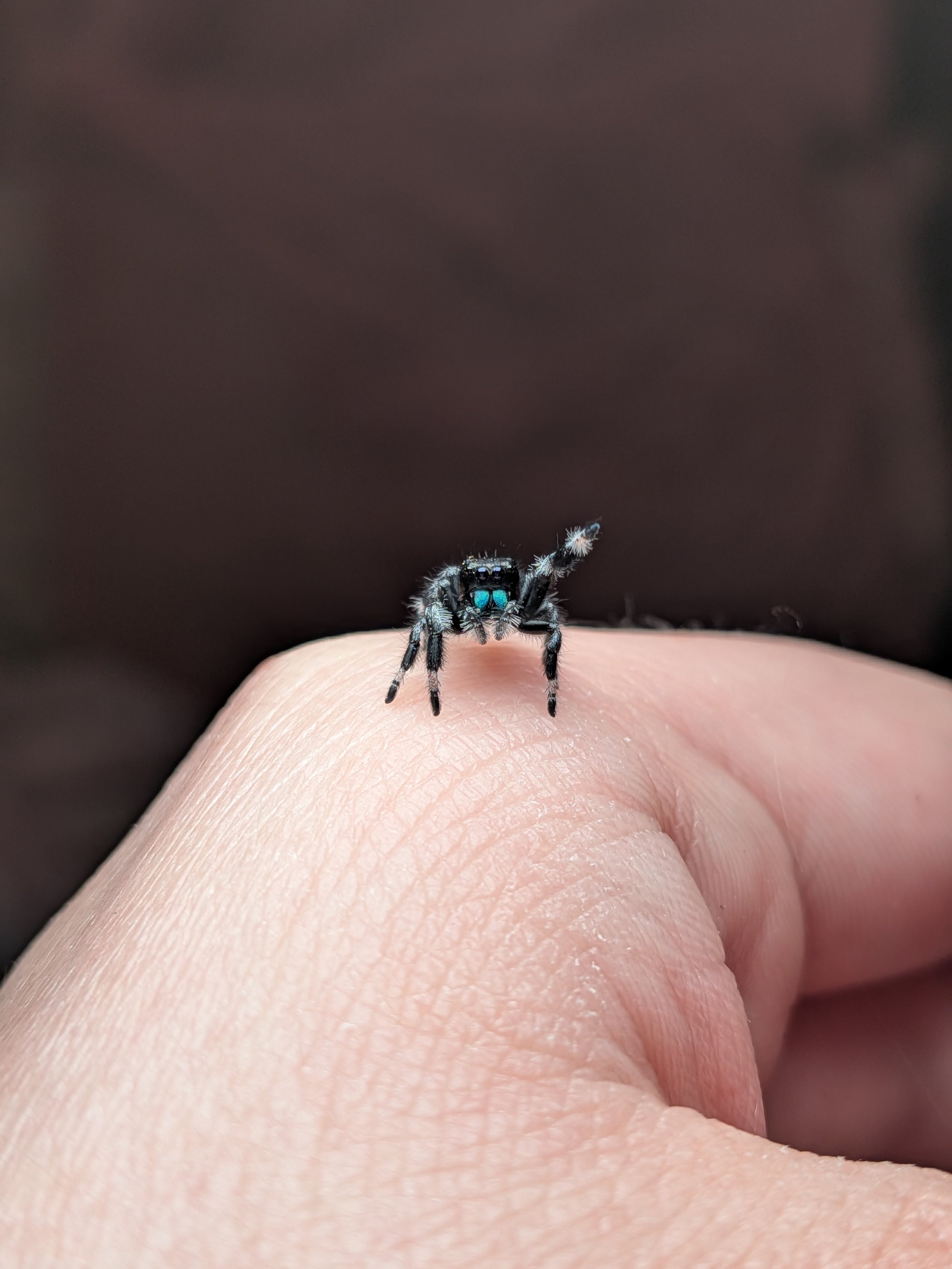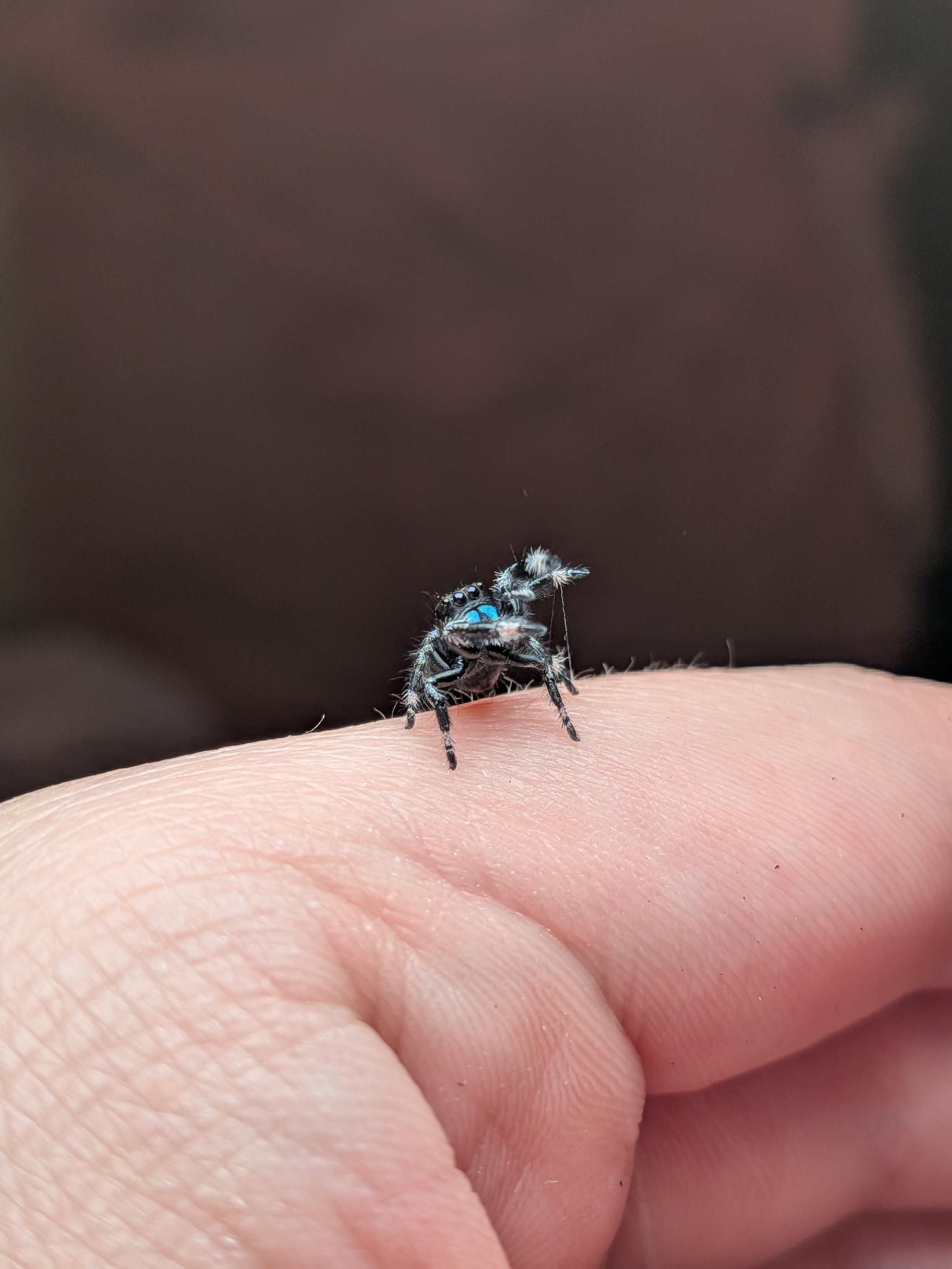Here are Care Requirements for your Jumping Spider!
1. Enclosure
Size: Minimum 20cm x 20cm x 20cm. Jumping spiders appreciate vertical/arboreal space for climbing.
Material: Glass or acrylic with good ventilation. Ensure a secure front opening lid to prevent escapes and destroying of webs and hammocks (we recommend our enclosure).
Setup: Include climbing surfaces such as twigs, cork bark, fake plants, and mesh (for web attachment). You can buy these accessories at Opus Vita at a very reasonable price!
2. Substrate
Use a layer of Spider Life soil. Depth of 2-3cm is ideal to maintain some humidity.
Avoid waterlogging; ensure the substrate is slightly damp but not wet.
3. Temperature
Maintain a range of 22–26°C.
Use a low-wattage heat mat behind the enclosure (not directly on the enclosure!) if the room temperature drops below 20°C. We recommend using a Habistat Cloth Heat Mat with a Thermostat Controller all year round, following the above temperatures ranges.
Use our Magnetic Thermostat & Hygrometer to monitor temperature and humidity accurately.
4. Humidity
Keep humidity at 50-60%.
Mist lightly 2-4 times per week to provide drinking droplets. Allow the enclosure to dry out between misting to avoid mould.
A hygrometer can help monitor humidity levels.
5. Lighting
Natural light: Place the enclosure in a bright room but out of direct sunlight.
Artificial light: An LED light is required in 12 hour cycles (i.e. during the day). We recommend these LED Strip Lights.
6. Feeding
Offer appropriately sized live prey, such as:
Flightless fruit flies (for slings).
Small/medium crickets, mealworms, green/blue bottle flies or dubia roaches (for adults).
Feed 1-2 times a week for slings, 1-2 times a week for subadults, and once a week (or judge by using this Feeding Chart) for adults; spiders may refuse food during moulting. NEVER LEAVE LIVE PREY IN THEIR ENCLOSURE THAT YOU HAVEN’T SEEN THEM TAKE DOWN AND START TO EAT!. This is because prey such as mealworms and crickets can bite and potentially kill your spider!
Remove uneaten prey after 24 hours.
7. Water
Provide drinking water by misting the enclosure. We use this Spray Bottle.
No water dish is necessary, as spiders drink from droplets.
8. Handling
Handle with care. Use gentle, slow movements to encourage the spider onto your hand. Sometimes this can be done (gradually!) with a small tipped paint brush.
Avoid dropping or squeezing, as jumping spiders are fragile.
9. Moulting
During a moult, the spider may refuse food and appear lethargic.
Do not disturb during this period, and ensure the enclosure stays humid to aid the process.
10. Cleaning
Spot clean regularly to remove prey remains and mould. We use Cotton Buds with clean water.
Deep clean the enclosure every 3-4 months, replacing substrate and cleaning decor.
11. Seasonal Considerations in the UK
Use a thermostat-regulated heat mat to maintain temperature. Avoid placing the enclosure near cold drafts.
Ensure the enclosure doesn't overheat by using our magnetic thermostats that you can purchase in our accessories tab of our shop!

